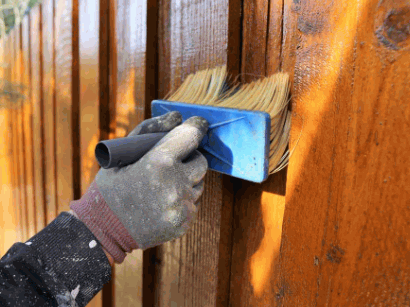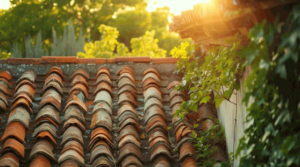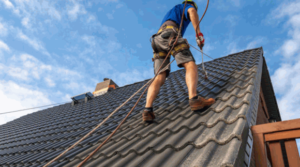If you’re considering adding a fence to your property, a wood fence is a classic choice that offers numerous benefits.
We’ll explore why wood fences are a popular option, the different types of wood fences available, and how to choose the best one for your specific needs.
From aesthetics to affordability, versatility to easy installation, we’ll cover it all.
Learn how to maintain your wood fence for long-lasting beauty and functionality.
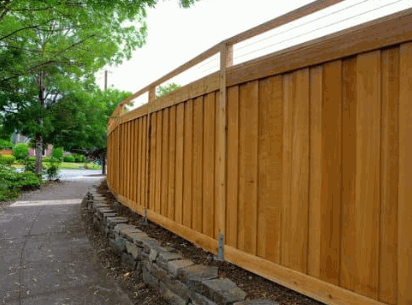
What Is A Wood Fence?
A timber fence is a structure made of timber, typically used to provide privacy, security, and aesthetic appeal to a property. Timber fences come in various styles and designs, offering a natural and classic look to outdoor spaces.
Timber fences serve as a versatile boundary option, suitable for both residential and commercial applications. In homes, a wooden fence can enhance the kerb appeal, create a cosy backyard oasis, or secure a garden area. Similarly, in commercial settings, timber fences can delineate property boundaries, provide a welcoming entrance, or offer a rustic touch to outdoor seating areas.
Timber fencing options vary from traditional picket fences to modern horizontal designs, each contributing to the overall aesthetic of the property. The choice of timber types, such as cedar, pine, or redwood, also influences the durability and maintenance requirements of the fence.
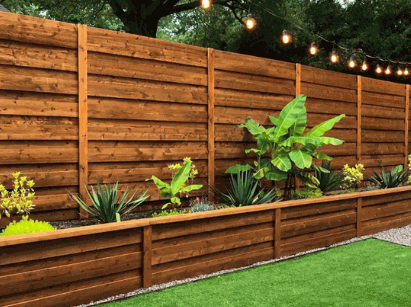
Why Choose A Wood Fence?
Choosing a wooden fence offers a blend of privacy, durability, and aesthetic appeal to your property.
Wooden fences provide an excellent barrier that can effectively block out noise, unwanted views, and nosy neighbors, creating a tranquil and secure environment for you and your family. Their versatile design and natural look seamlessly complement various architectural styles and landscaping elements, enhancing the overall visual charm of your space.
Installation of a wooden fence is relatively straightforward, especially when compared to other fencing materials. The process can be customised to meet your specific requirements, ensuring a precise fit on your property’s boundaries without much hassle.
Most importantly, maintaining a wooden fence is simple and cost-effective. Periodic cleaning and occasional staining or sealing can help preserve its structural integrity and natural beauty, prolonging its lifespan and saving you time and money on extensive repairs.
Aesthetics
The aesthetics of a wooden fence play a crucial role in enhancing the overall look of the property. Various styles and types, such as Western Red Cedar and other hardwood or softwood options, offer a natural and elegant appearance to the surroundings.
For those seeking a classic charm, the timeless appeal of Western Red Cedar stands out with its warm tones and durability. The intricate grain patterns of woods like Douglas Fir or Cypress can bring a touch of sophistication to the fence design. Each wood type boasts unique characteristics; for instance, the reddish hues of Redwood or the golden tones of Yellow Pine can add a pop of colour to the landscape. Embracing the natural variations in wood, from knots to rings, creates a rustic yet inviting atmosphere.
Affordability
Timber fences are known for their affordability compared to other fencing materials. Whilst they offer cost-effective solutions, it’s essential to consider the pros and cons of timber fencing along with exploring popular options within your budget.
One of the key cost advantages of timber fencing is its initial price point, which is often lower than materials like metal or vinyl. The installation cost of timber fences is generally more economical due to the ease of working with wood.
It’s crucial to note that timber fencing may require more maintenance over time compared to other materials. Weather conditions can impact the durability of timber, leading to potential maintenance costs such as staining or sealing.
Popular options for cost-effective timber fencing include pressure-treated pine, cedar, and redwood, each offering a balance between affordability and durability depending on your budget.
Versatility
Wood fences offer versatility in terms of styles, features, and ornamental designs, catering to diverse preferences and property aesthetics. The combination of wood with materials like vinyl and composite allows for unique and customizable fencing solutions.
Wood fences come in various types such as picket, privacy, post-and-rail, and lattice, each offering distinct characteristics to suit different needs. The ornamental features of wood fences can include intricate patterns, decorative caps, and customised gates that enhance the overall look of the property.
- Some wood fences can be stained or painted to match the exterior of the house, whilst others can be left natural to achieve a rustic charm.
- Customization options for wood fences include unique post toppers, lattice designs, and integrated lighting features for a personalised touch.
Whether you prefer a traditional picket fence or a modern horizontal slat design, wood fencing provides a timeless appeal that complements various architectural styles.
Easy Installation
Wood fences are favoured for their ease of installation, making them a convenient choice for property owners. Understanding the durability of different wood types and considering installation costs are essential factors when opting for a wood fence.
One of the key aspects to bear in mind while choosing a wood fence is the type of wood you select. Cedar and redwood are popular choices known for their natural resistance to rot and insects, offering longevity to your fence with minimal maintenance. On the other hand, pine and spruce are more budget-friendly options but may require more upkeep over time.
The installation process for wood fences involves setting the posts, attaching the rails, and finally securing the pales. This step-by-step procedure ensures a sturdy and visually appealing fence for your property.
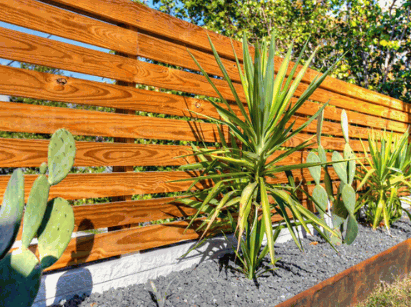
What Are The Different Types Of Wood Fences?
Wood fences come in various types, including picket fences, privacy fences, and different styles to suit your property’s needs. Understanding the characteristics of different wood types can help in selecting the ideal fence for your outdoor space.
- In terms of picket fences, they are known for their charming and traditional look. These fences typically have evenly spaced vertical boards with a smooth, flat top. Picket fences are great for adding a touch of Americana to your property while still providing a level of security.
- On the other hand, privacy fences offer seclusion and protection, with solid panels that block visibility into your yard. These fences are ideal for creating a secluded oasis and can be customised to different heights for added security.
Cedar Fence
A Cedar fence, especially Western Red Cedar, is among the longest-lasting wood fencing options available. Known for its durability and natural resistance to weather elements, Cedar fences are popular for their longevity and timeless appeal.
One of the key characteristics that set Western Red Cedar apart is its ability to resist rot, decay, and insect infestation, making it a low-maintenance fencing material. This type of Cedar also boasts a stunning reddish-brown hue that enhances the aesthetic appeal of any property.
The natural oils present in Cedar wood provide additional protection against moisture, ensuring the fence remains sturdy and strong even in harsh outdoor conditions. This means that choosing Cedar for your fencing project not only guarantees a beautiful and durable fence but also saves you time and money on maintenance in the long run.
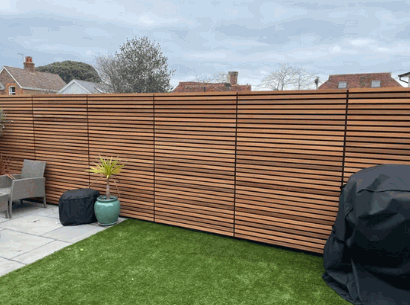
Redwood Fence
Redwood fences are renowned for their natural beauty and strength, making them an excellent choice for durable and aesthetically pleasing fencing solutions. Understanding the components of Redwood fences can help in proper maintenance and care.
One of the standout features of Redwood fences is their rich colour variations, ranging from light hues to deep red tones, which add a touch of elegance to any outdoor space. The natural resistance of Redwood wood to decay and insects makes it a long-lasting and low-maintenance fencing option.
The key components required to maintain Redwood fences include regular cleaning to remove dirt and debris, periodic staining or sealing to protect the wood from weathering, and inspecting for any signs of damage or wear that may need repair.
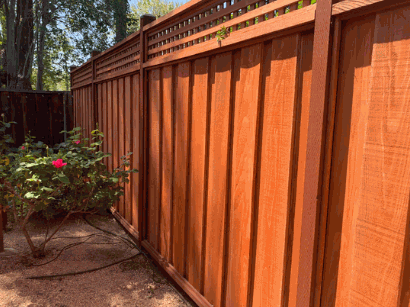
Pine Fence
Pine fences offer a cost-effective and versatile fencing solution, suitable for various property styles and preferences. Understanding the different styles and treatments available for Pine fences can help in enhancing their durability and visual appeal.
Pine fences are not only easy on the pocket but also provide a customisable option for homeowners looking to add a touch of natural beauty to their outdoor spaces. With Pine’s natural resistance to decay and insects, these fences can stand the test of time with proper care.
Whether you prefer a sleek modern design or a more traditional look, Pine Fences can be styled to match your taste. By applying protective coatings such as sealants or stains, you can further increase the longevity of Pine fences while enhancing their overall aesthetic appeal.
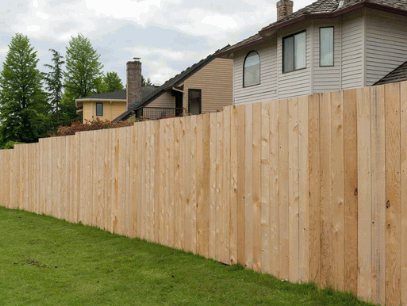
Spruce Fence
Spruce fences are known for their weather-resistant properties, making them a reliable choice for outdoor fencing projects. Understanding the characteristics of Spruce wood and its treatment options is essential for maintaining the fence’s longevity.
When properly treated and maintained, Spruce fences can withstand the elements, including rain, snow, and harsh sunlight. This resilience is due to the natural durability of Spruce wood, which is known for its resistance to decay and insect infestations. It’s important to regularly inspect the fence for any signs of damage or wear, as timely repairs and treatments can significantly extend its lifespan.
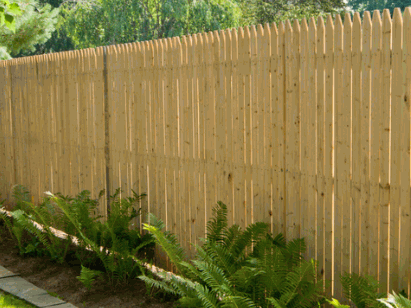
Cypress Fence
Cypress fences offer a durable and visually appealing fencing solution, suitable for various climates and property styles. Understanding the treatment options available for Cypress wood can help in preserving the fence’s quality and longevity.
One of the key advantages of Cypress wood is its natural resistance to insects and decay, making it an ideal choice for outdoor structures such as fences.
Cypress fences can easily complement different architectural styles, from traditional to modern, enhancing the overall aesthetic of your property. Properly treating Cypress wood with protective sealants and finishes is crucial to shield it from harsh weather conditions, ensuring its longevity and maintaining its beautiful appearance over time.
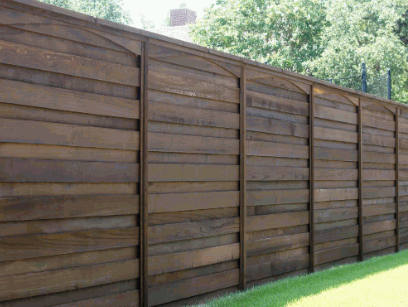
Which Wood Fence Is The Best For You?
Selecting the best wood fence for your needs involves considering factors like the location and climate of your property, the intended purpose of the fence, the maintenance requirements, and your budget constraints. Evaluating these aspects can help in choosing the ideal wood fence that meets your specific requirements.
When deciding on the type of wood for your fence, it’s crucial to keep in mind that different wood species have unique characteristics that can impact the appearance and durability of the fence. Hardwoods such as cedar and redwood are known for their natural resistance to decay and insects, making them popular choices for outdoor fencing. On the other hand, softer woods like pine may require additional treatments or sealants to enhance their longevity.
Location And Climate
When choosing a wooden fence, consider the location and climate of your property to ensure the fence’s longevity and performance. Factors like moisture levels, temperature variations, and exposure to elements play a crucial role in determining the most suitable wood type for your fencing needs.
For example, in humid regions, it is essential to opt for wood species that are naturally resistant to rot and decay, such as cedar or redwood, to combat the high moisture content in the air. Conversely, in areas with extreme temperature fluctuations, hardwoods like oak or teak may fare better due to their durability and ability to withstand varying weather conditions.
This tailored approach ensures that the chosen wood material can stand the test of time and requires minimal maintenance in the face of environmental challenges.
Purpose Of The Fence
Understanding the primary purpose of your wood fence is essential in determining the appropriate design, height, and material selection. Whether for privacy, security, aesthetic enhancement, or property boundaries, aligning the fence’s purpose with your specific needs is key to a successful fencing project.
Privacy fences, for example, are constructed with taller heights and minimal gaps between the panels to shield your outdoor space from neighbouring views. These fences create intimate environments, perfect for relaxing or hosting gatherings without unwanted attention. On the other hand, security-focused fences often feature sturdy materials and strategic positioning to deter intruders. They serve as protective barriers that give homeowners peace of mind.
Aesthetically pleasing fences add value to your property by enhancing its overall look and curb appeal. These fences come in various designs, from classic picket fences to modern horizontal panels, allowing you to personalise your outdoor space to reflect your style. It’s important to consider both the functional and visual aspects of your fence when making design choices, as these elements play a crucial role in the overall appearance and functionality of your property.
Maintenance And Durability
The maintenance requirements and durability of a wooden fence are crucial factors to consider for its long-term performance and appearance. Regular upkeep, proper treatments, and selecting a durable wood type within your budget can ensure the fence retains its quality and functions effectively over time.
Regular maintenance plays a key role in preventing issues such as rot, warping, or insect damage in wooden fences. Treating the wood with protective coatings or stains can increase its resistance to moisture and weather elements, enhancing its lifespan.
When choosing the right wood material, options like cedar or redwood are known for their natural durability and resistance to decay. While these may be slightly pricier, they offer long-term benefits and may require less maintenance in the long run, potentially saving you money over time.
Budget
Setting a realistic budget for your wooden fence project is essential in ensuring you strike a balance between quality, maintenance costs, and overall expenses. By aligning your budget with the maintenance and durability requirements of the fence, you can make informed decisions that meet your financial constraints.
Considering the long-term maintenance and repair costs associated with different types of wooden fencing materials becomes crucial. Some wood varieties may require more frequent treatment or replacement, impacting your budget over time. Investing initially in higher-quality, durable wood can lead to lower maintenance expenses in the future. Evaluating the trade-offs between initial costs and long-term savings helps prioritize where to allocate your budget. Making well-informed choices that align with your financial limitations ensures that your wooden fence remains both aesthetically pleasing and functional for years to come.
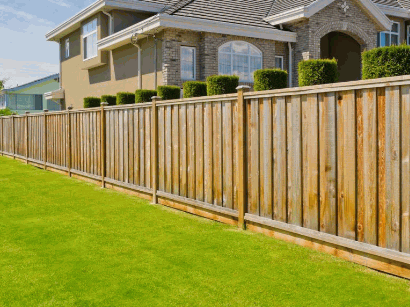
How To Maintain Your Wood Fence?
Maintaining your wooden fence involves regular cleaning, inspections for damage, timely repairs, treatments for weather protection, and proper staining and sealing to enhance its longevity and appearance. By following a maintenance routine, you can preserve the beauty and functionality of your wooden fence for years to come.
Regular cleaning is essential to prevent dirt buildup and mould growth, which can damage the wood over time. A simple mixture of mild soap and water can effectively clean the surface of the fence.
When inspecting your fence, pay attention to signs of rot, warping, loose boards, or insect infestations. Addressing these issues promptly can prevent further damage and save you money on extensive repairs.
For weather protection, consider applying a weather-resistant sealant or waterproofing solution to shield the wood from the elements.
Regular Cleaning And Inspection
Regular cleaning and inspection of your wooden fence are essential to identify any signs of damage, mould, or wear and tear.
By staying proactive and diligent with the maintenance of your wooden fence, you can ensure its longevity and aesthetic appeal.
- Regularly removing debris and dirt build-up prevents moisture retention, which can lead to rot and decay.
When inspecting your fence, pay close attention to areas near the ground and joints where water accumulates, as these are common trouble spots. Utilise a gentle cleaning solution and a soft brush to scrub away grime without damaging the wood’s surface. Promptly repairing any loose boards or cracks will help maintain the structural integrity of the fence.
Dig deeper: How To Clean Fence Before Painting
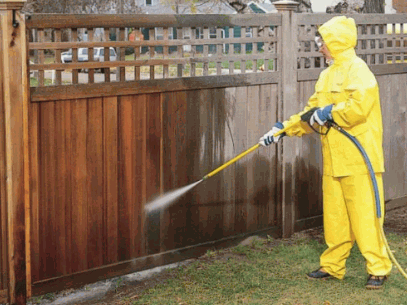
Repairs And Treatments
Timely repairs and treatments are necessary to address any damages, rot, or structural issues in your wooden fence. Applying suitable treatments, sealants, and protective coatings can enhance the fence’s resistance to weather elements and prolong its lifespan.
In terms of maintaining your wooden fence, early detection of issues is crucial. Regularly inspecting the fence for signs of rot, cracks, or loose boards is a proactive approach to prevent further damage.
For minor damages, such as small cracks or splits, timely repairs with wood filler and proper sanding can prevent them from developing into more significant problems.
When treating the fence, choosing the right products is essential.
Allowing the wood to thoroughly dry before applying treatments can ensure better absorption and effectiveness.
Considering the climate and weather conditions in your area is also important; certain treatments may be more suitable for specific climates.
Sealing the fence with a suitable sealant after treatment can provide an additional layer of protection against moisture and UV rays, contributing to the overall durability of the wood.
Staining And Sealing
Staining and sealing your wooden fence can protect it from moisture, UV rays, and other environmental factors that contribute to deterioration. Regularly applying quality stains and sealants after cleaning and inspecting the fence can maintain its appearance and structural integrity.
By protecting the wood fibres from absorbing water, a quality stain acts as a barrier against rotting and warping. UV-resistant sealants shield the wood from sun damage, preventing discolouration and cracking. The staining process involves cleaning the surface, applying the stain evenly to enhance the wood’s natural beauty, and sealing it for long-lasting protection.
Post-cleaning applications play a crucial role in removing dirt, mould, and mildew, ensuring that the fence remains in top condition year after year.
